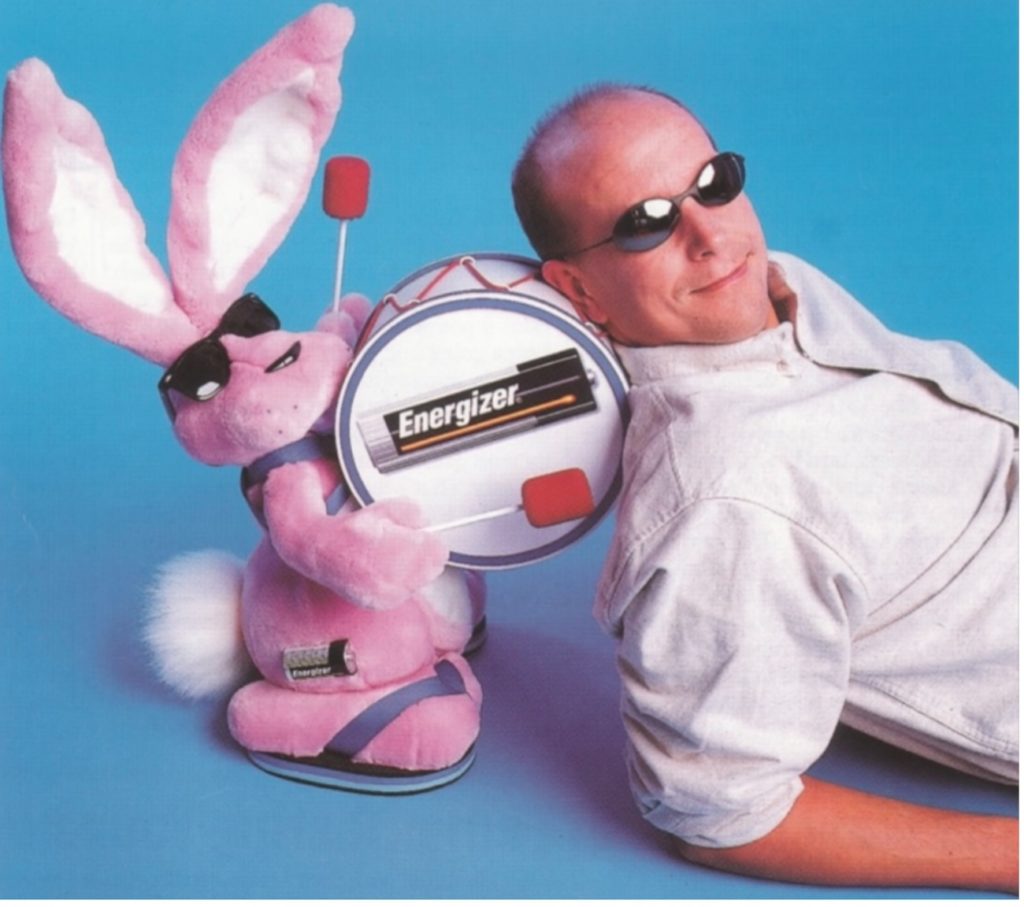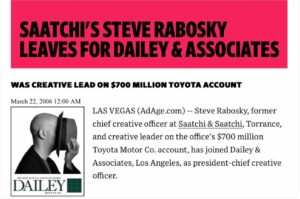 For 1971 graduate Steve Rabosky, success was something he didn’t envision as a student. According to him, he didn’t envision much of anything back then other than what he was going to do for the weekend! Those plans usually included hanging out with friends cruising the A & W, and trying to find someone to buy beer. Little did he know then that he would go on to create one of the most iconic figures in the advertising world.
For 1971 graduate Steve Rabosky, success was something he didn’t envision as a student. According to him, he didn’t envision much of anything back then other than what he was going to do for the weekend! Those plans usually included hanging out with friends cruising the A & W, and trying to find someone to buy beer. Little did he know then that he would go on to create one of the most iconic figures in the advertising world.
 An English major at IU, Steve was a great writer and especially enjoyed his minor, Film Studies, he loved to write but his minor meant he could watch movie classics from the 30s and 40s a couple of times per week. It was an easy A for him.
An English major at IU, Steve was a great writer and especially enjoyed his minor, Film Studies, he loved to write but his minor meant he could watch movie classics from the 30s and 40s a couple of times per week. It was an easy A for him.
After graduation from IU, Steve said he spent some time in Bloomington trying to figure out what to do with a degree in English. He came across a newspaper ad that read, “Copywriter Wanted. Will Train.” The job was at a seven-person advertising agency in the 700 person town of Clay City, Indiana.
He answered the ad, got the job, and started off writing small space print ads for banks, farm equipment manufacturers, and a small television repair shop. Eventually, he wrote and produced the company’s first television commercial. He was given a $1,000 production budget and came in over budget by $1,000. Everyone liked it so much, however, that he didn’t get fired.
He then moved to California and bounced around a few ad agencies until he landed at the place that changed his career and life: Chiat/Day in Los Angeles. It was the hottest, most creative agency on the planet at that time with an amazing roster of blue-chip clients: Apple (yes, he worked with Steve Jobs), Nike, Nissan, Porsche, Sony, Mitsubishi Electric, Sunkist, TV Guide, Pizza Hut and Energizer, he was hired there in 1983 as a copywriter and within five years, he was promoted to Managing Partner, Executive Creative Director.
 According to Steve, there were two mantras at Chiat/Day that described the company’s culture: “Good enough is not enough,” and “If you don’t come in on Saturday, don’t bother to show up on Sunday.” The minimum standard for the ads they made was award-winning creative excellence.
According to Steve, there were two mantras at Chiat/Day that described the company’s culture: “Good enough is not enough,” and “If you don’t come in on Saturday, don’t bother to show up on Sunday.” The minimum standard for the ads they made was award-winning creative excellence.
Enter the pink Energizer Bunny. It was the result of a new business pitch in 1989 when his agency was asked by Ralston-Purina to compete for the Energizer battery advertising. A few agencies would compete with one condition. They had made a commercial where a battery-operated toy bunny was beating a drum alongside several other toys clanging symbols. One by one, the other toys stopped working while the bunny kept going. Steve thought at the time it was a dumb commercial but his client was in love with the bunny. The condition was they had to present a campaign idea with the bunny demonstrating how long the battery lasts.
Steve said that “none of us thought we could do anything good with that stupid bunny.” After several days of working on it, it hit them. “What if we created that original dumb bunny commercial, but have the bunny walk out of that commercial and walk into another dumb commercial, then another, then another, and so on and so on? That might be an entertaining way to demonstrate long-lasting batteries.”
The birth of the Energizer Bunny was starting. He explained they made a bunch of hilariously funny bad fake commercials like Sitagain Hemorrhoid Cream, the kind of commercial everyone hates. After a couple of bad commercials, gotcha! The bunny walks through, beating his drum, and is still going and going and going.
It worked. They won the business and made dozens of fake commercials for the bunny to interrupt. Sales went through the roof, and the ad campaign ended up winning every award in the industry over the next several years.
Steve went on to win lots of top awards over the years in TV, Print, Radio, and Outdoor advertising. He served on the juries of many awards shows, including the Film Jury at the Cannes Advertising Festival in France. It was considered to be “The Oscars” of the advertising world.
We asked Steve what advice he would give to today’s students to be successful. He said, “Find something you’re passionate about, then challenge yourself to do it better than you ever thought possible.” He continued, “Don’t focus on the money, focus on the quality of your work. If the work is great, the money will follow.”
Now enjoying the fruits of his labor, he retired 13 years ago at age 55. As he claimed, the advertising business was going digital and he was analog! He enjoys golf, pickleball, and traveling (pre-Covid). If you’d like to see some of his finest works, please visit the following link: https://youtu.be/9LqJUUlRbXw. You’ll enjoy it.
Once a Bull Dog, always a Bull Dog!
